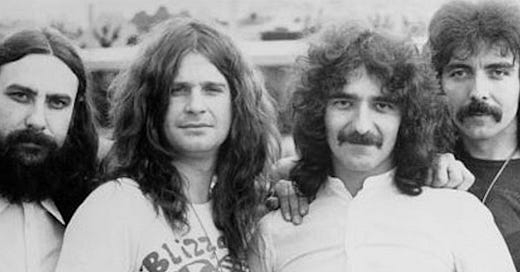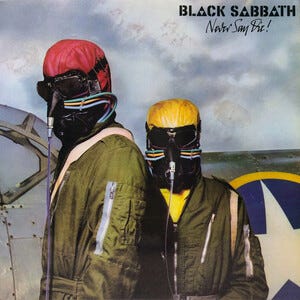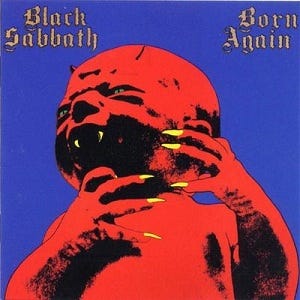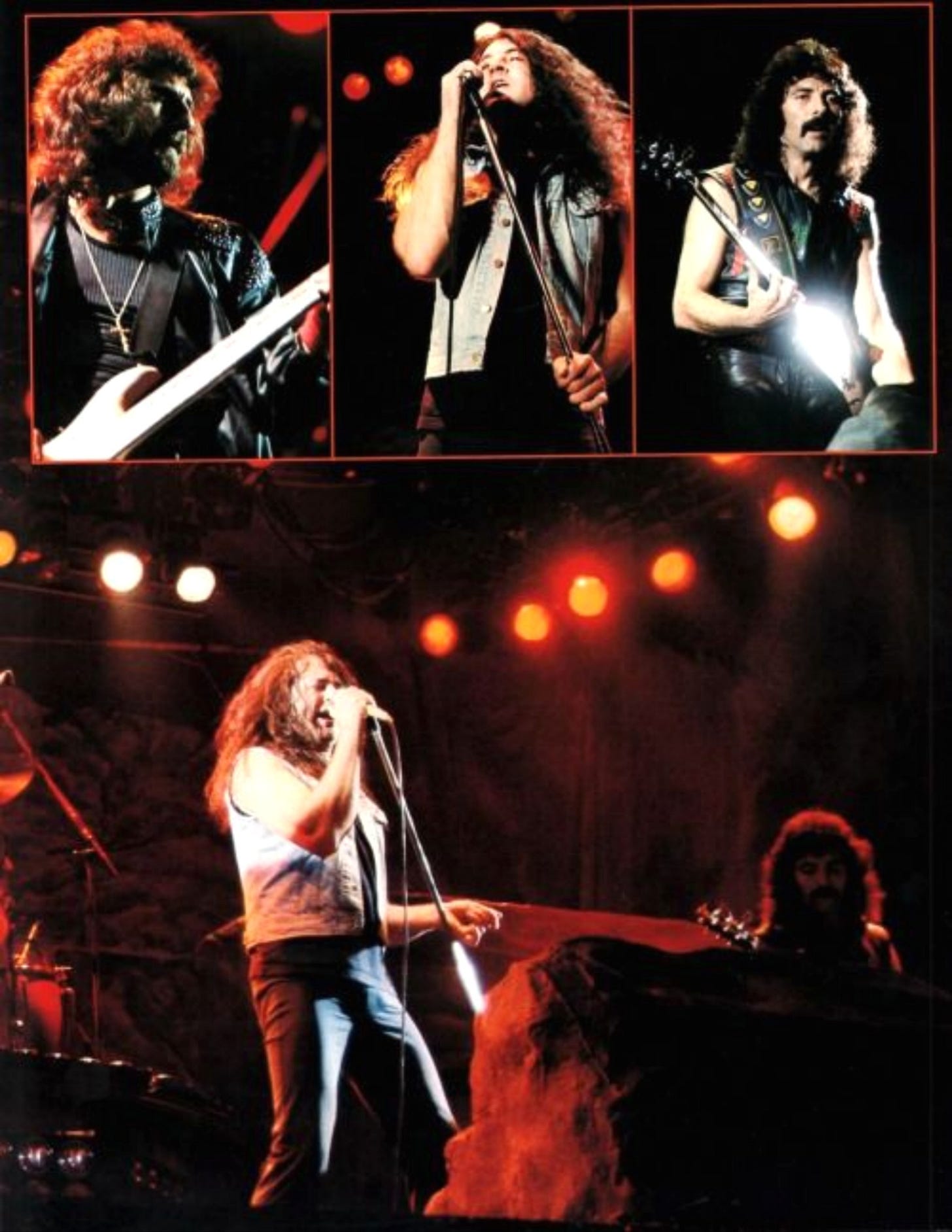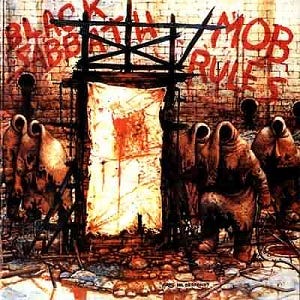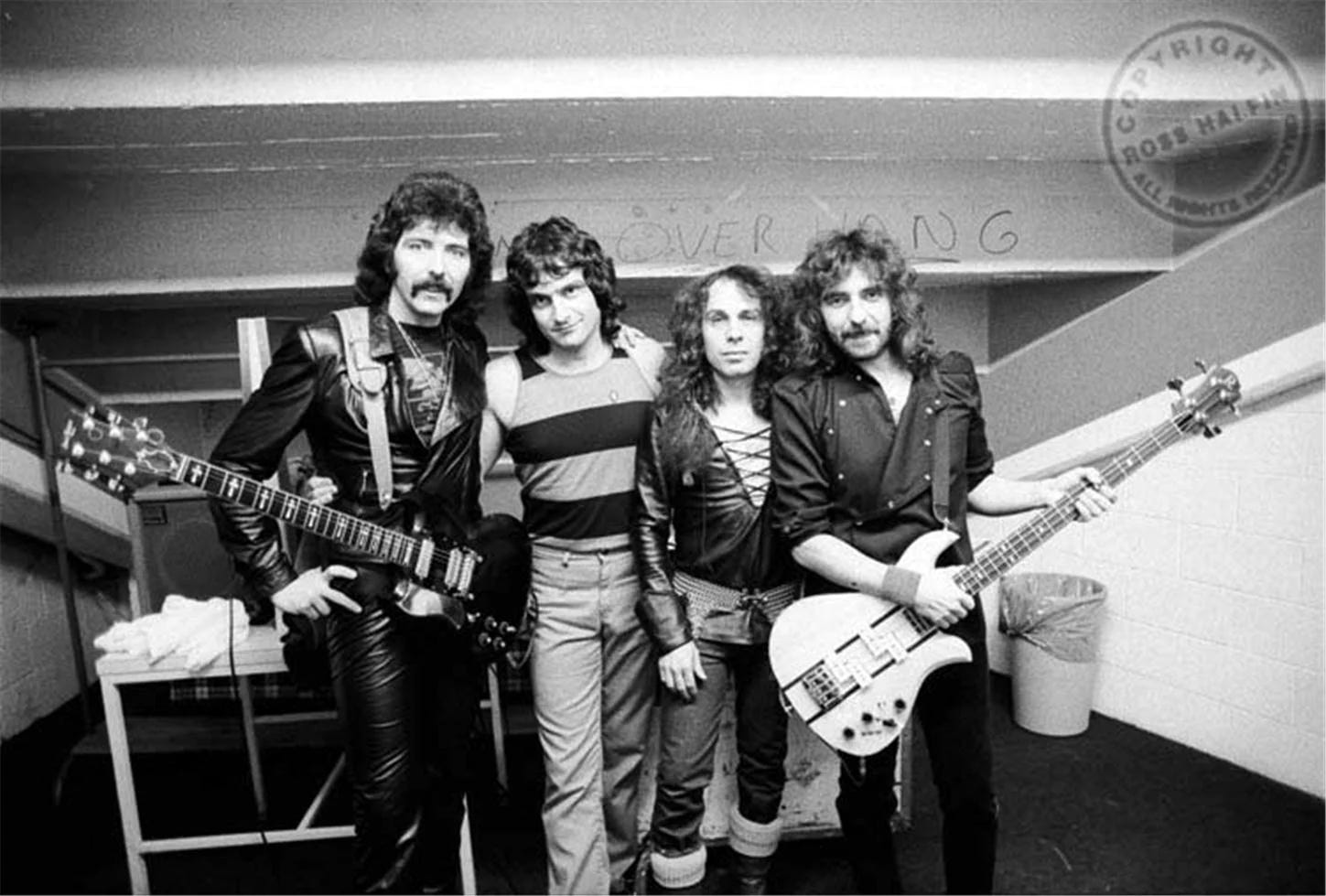Ranking the (Studio) Albums: Black Sabbath (Part III: #11-9)
Some of their most loved and hated efforts


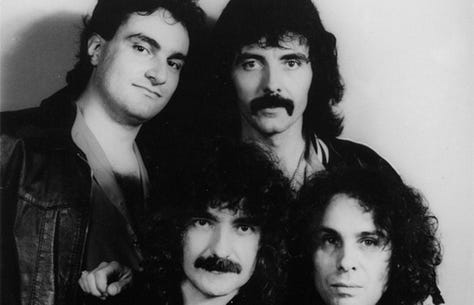
If Part I of this series tried to find some value in Black Sabbath’s lesser albums (and maybe enjoyed picking on Tony “the Cat” Martin a wee bit too much), and Part II aimed to unearth the hidden gems from the middle and later years (give it up for Cross Purposes), this is where things really get interesting.
The next three records were all recorded in varying states of confidence and confusion, and all found Sabbath in some form of flux. Because of this, all three stand apart from the rest of the catalogue, and not always for the best reasons. They are cherished by small but fervent corners of the fanbase, and some continue to grow in estimation over time. None rank among the band’s very best, but each is wholly unique to them, and each has plenty to offer.
#11: Never Say Die! (1978)
If Technical Ecstasy was the first time the Sabs didn’t sound in full command of their sound and craft, the very ironically titled Never Say Die! was the first time they sounded like they might not even make it to the end of the album. This was the sound of a once mighty band in tatters and running on fumes, so much so that it was discussed in great detail as part of the ongoing series of “fumes” albums. It was covered in so much depth there that instead of either repeating or recapping its contents, perhaps this sums it up:
Never Say Die! may have been Sabbath’s weirdest album, but it was also arguably their most fascinating: completely running on fumes, tired of themselves and each other, and searching for inspiration anywhere they could find it, this is the record that most lends itself to revisiting. The title track may have been an unintentional kiss off, but it was also much more fun than a late ‘70s Sabbath tune had any right being. And the re-written “Junior’s Eyes” (with new lyrics about the death of Ozzy’s father) is one of the hidden gems in the band’s catalogue, a moving and powerful meditation on loss, grief and the contradictory emotions surrounding both, and with a commanding musical performance on top. Even “A Hard Road” had a certain goofy charm.
This wasn’t really Black Sabbath at their heaviest, but it was definitely Sabbath at their most random. There was happy-go-lucky hard rock (the title track), synthy space rock (“Johnny Blade”), jazzy freakouts (“Air Dance”, “Breakout”), a funky swaggerer chestily bellowed by Bill Ward (“Swinging the Chain”) and so much more, made even stranger by a mix that made an expensive and snowy (in more ways than one) studio in Toronto sound like some kid’s rec room.
But as the pull quote above indicates, there was a decent amount of magic still in the grooves, and while one could easily shake their head at the sheer confusion on display (and indeed, many if not most Sabbath fans put this at the very bottom- some consider this even worse than Forbidden), one could just as easily bask in the eccentricity and even grow to love its strangeness.
Rating: 3.5/5
#10: Born Again (1983)
5 years after their first lineup fell to pieces, and 3 years after their shocking resurrection, Black Sabbath was once again in disrepair. Once again without a singer or a drummer, and once again without a clear sense of direction, Tony Iommi and Geezer Butler hit the bar with a similarly out of sorts Ian Gillan, and when everybody peeled themselves off the floor the next morning they learned Gillan had apparently signed on as Sabbath’s next singer.
The backstory behind Born Again is so ludicrous that nobody, least of all the people who played on the thing, bothered to even try to make sense of it. The union of Deep Purple’s most famous singer and the lords of Birmingham was always a marriage of convenience: Gillan had disbanded his namesake group a year earlier, claiming vocal strain but really because he was hemorrhaging cash by mostly funding the band out of his own pocket. His first choice was to reform Purple, but when Ritchie Blackmore and Roger Glover wanted another shot at breaking America with Rainbow and Jon Lord remained committed to Whitesnake (of all things), the singer needed to score a payday. And there was a big band playing arenas all over the world who always kept the bar fully stocked, so there you go.
In case the recurring theme here hadn’t yet been made clear, Born Again’s opening track spelled it out in no uncertain terms: “Trashed” kicked off the album and found Black Sabbath pounding and shrieking about drunken escapades on go-karts. Perhaps Gillan felt he had to live up to a certain image associated with Sabbath and heavy metal in general, or maybe he was just perpetually hammered, or probably both, but either way he went full shrieking psycho, screaming more often during these 40 minutes than on his entire discography combined. The rest of the band sounded similarly frazzled, including a returning Bill Ward who shockingly was the one person in the lineup trying to stay sober, and the notoriously botched mix made these songs, such as they were, sound not so much played as fought through.
Coming roughly around the middle of a lengthy and frequently legendary catalogue of albums, Born Again was by far the single most ridiculous album ever to bear the Black Sabbath name. Gillan yelped and screamed lyrics written largely to amuse himself, Ward delivered the sweatiest performance of his life and Iommi apparently ran his amps through cables lined with cocaine. The song titles provided all the commentary anyone needs: “Disturbing the Priest”, “Digital Bitch”, “Hot Line”, “Keep It Warm”. And for the most part, the long-running consensus surrounding Born Again could pretty much be summed up in the form of a question: “what the hell is this?”
But just like with Never Say Die!, more folks are revisiting Born Again with fresh ears and greeting all the craziness with not only appreciation but affection. “Zero the Hero” is usually the gateway drug thanks to its monster riff and crushing sense of inevitability, but once that is ingested it gets a lot easier to laugh both with and at the irreverent stupidity of “Trashed” and “Disturbing the Priest”. These were all incredibly silly songs, but for the first time ever it sounded like Black Sabbath, or at least their singer, was having fun, and even if the album had virtually nothing to do with their previous (or subsequent) history, it stood out on its own as a singular record featuring a once-in-a-lifetime lineup. And nobody would ever accuse Ian Gillan of imitating anyone.
Rating: 3.5/5
#9: Mob Rules (1981)
At first glance, Mob Rules was a consolidation of the triumphs Sabbath had accrued from Heaven and Hell and its supporting tour, a lean and nasty assurance that they had fully emerged from several years of drift and were hungrier than ever. They even made it through the sudden departure of a second original member during the Heaven and Hell tour, quickly bringing in Vinny Appice on drums and marching ever onward. More than that, Ronnie James Dio was more confident than ever that his approach and vision was exactly what Sabbath needed, and he had the box office receipts and record sales to prove it.
But while Mob Rules was largely a continuation of Heaven and Hell, it was also very much its own thing and had a distinct aesthetic that was quite different from what came before, including its immediate predecessor. The riffs were blunter, as were the drums, Dio’s snarl had a nastier edge, and the overall meaner attitude was emphasized by Martin Birch’s dry and red-eyed (and coke-fueled, according to Geezer Butler, who would know of such things) production. All of this gave songs that were ostensibly sequels to sister tracks on Heaven and Hell (“Turn Up the Night” was a straight “Neon Knights” rewrite, “Sign of the Southern Cross” was an epic along the lines of “Heaven and Hell”, “Falling Off the Edge of the World” was a more melodramatic “Die Young”, and so on) a nastier bite that made Sabbath sound much more malicious than usual.
And to a significant extent they pulled it off: all of the aforementioned tracks are classics, along with the pure metallic fury of “The Mob Rules”- that opening killshot of an Iommi riff giving way to a massive Dio “ooooooooooooooohhhhhhhhhhhh COME ON!!!” was merciless and unstoppable, to say nothing of the frenzied verses and frantic soloing. Pure awesomeness, that one.
But all of the treble and bad vibes made Mob Rules feel a bit like Sabbath’s “asshole” album: this was a record that had plenty of merit and was frequently right on the money, but also kind of a dick about it, so even its best moments can leave a bitter aftertaste depending on one’s mood. Furthermore, unlike its predecessor, Mob Rules had a wider gap between stone classics and filler: “Slipping Away” and the aptly-titled “Over and Over” were tedious, and even cult favorites “Country Girl” and “Voodoo” felt strangely bitter and not fully thought through (the latter also featured some truly inane Ronnie lyrics: “Say you don’t love me, you’ll burn!”- um, huh?).
Perhaps the biggest mark against Mob Rules was that, in hindsight, in a lot of ways it felt more like a prequel to Holy Diver than a sequel to Heaven and Hell: besides the towering force of Ronnie James Dio’s personality shining through every moment, Vinny Appice’s blocky drumming was prevalent in the mix to the point of nearly overpowering the record. He was a forceful player, to be sure, but also a stark contrast to Bill Ward and the stealth subtlety he brought to the table. And of course, considering the previous entry on this list, Mob Rules didn’t sound anything like Sabbath’s next one, though Dio’s first record under his own name certainly did.
So just like the other entries in this section, Black Sabbath’s second album with Ronnie James Dio was a bit of a push/pull experience: there was no shortage of pure brilliance and magic, but there were just enough questionable moves and weird vibes to hold it back from true greatness.
Rating: 3.5/5

